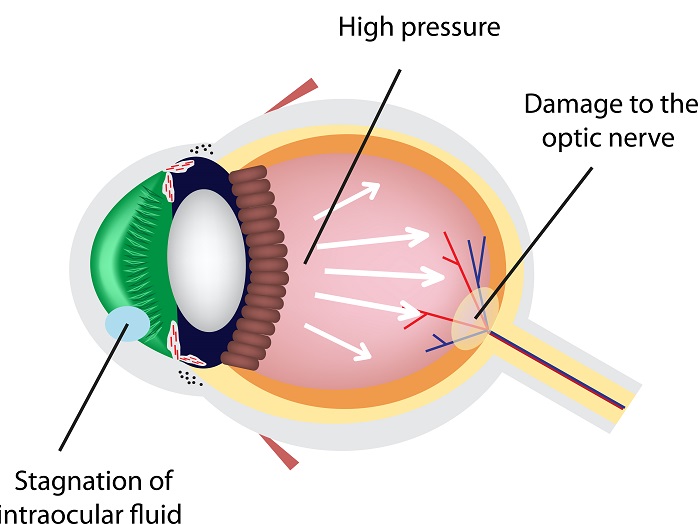Understanding the Different Vision Improvement Procedures Available for Clearer Sight
In the world of vision improvement treatments, a wide variety of choices exist to address refractive mistakes and provide people with more clear view. Let's check out the intricacies of these treatments and dropped light on the path to attaining boosted vision clarity.
LASIK Surgical Procedure
LASIK surgical procedure is an usual refractive treatment used to fix vision issues such as farsightedness, nearsightedness, and astigmatism - retina service near me. This surgical technique, which stands for Laser-Assisted in Situ Keratomileusis, intends to improve the cornea to boost just how light is concentrated on the retina, eventually improving vision clarity. Throughout the treatment, a slim flap is developed on the cornea, and a laser is made use of to eliminate accurate amounts of cells to improve it properly. This improving permits for light to be precisely concentrated onto the retina, correcting refractive errors.
One of the key benefits of LASIK surgical procedure is the quick renovation in vision experienced by individuals. Several individuals observe a significant improvement in their vision immediately after the procedure. Additionally, many clients report very little pain and pain during the surgery and recuperation duration. The recovery time for LASIK is fairly quick, with lots of individuals going back to their everyday tasks within a day or 2 post-operation. In general, LASIK surgical treatment is a popular option for individuals seeking a lasting option for their vision issues.
PRK Treatment
While also a typical refractive treatment, the PRK (Photorefractive Keratectomy) strategy varies from LASIK surgical treatment in its approach to remedying vision problems. In PRK, rather of producing a flap on the cornea, the external layer of the cornea, called the epithelium, is completely gotten rid of. This allows the laser to improve the cornea to remedy refractive mistakes such as nearsightedness, farsightedness, and astigmatism straight on the surface area.

Despite the longer recuperation time, PRK can generate outstanding lead to vision improvement, making it an important choice for those who might not appropriate candidates for LASIK surgical procedure.
Implantable Lenses
Unlike PRK where the cornea is improved straight, implantable lenses offer one more technique for correcting vision by inserting fabricated lenses inside the eye. This treatment is specifically advantageous for people with high levels of farsightedness, astigmatism, or nearsightedness who may not be suitable prospects for laser surgical treatments like LASIK or PRK.
Implantable lenses, likewise known as phakic intraocular lenses, job by supplementing the eye's all-natural lens with a man-made one. retina service near me. These lenses can be positioned before the all-natural lens (former chamber) or behind the iris and in front of the natural lens (posterior chamber) By changing the power and positioning of these lenses, eye doctors can efficiently deal with refractive mistakes and improve aesthetic acuity
One benefit of implantable lenses is that they are exchangeable and removable, supplying adaptability for future changes. However, as with any type of surgery, there are threats involved, such as infection or cataract formation. Individuals considering implantable lenses must speak with an eye treatment specialist to determine the visit their website most ideal alternative based upon their specific demands and eye health and wellness.
Corneal Rings
Corneal rings, likewise called intracorneal ring sectors, are tiny, transparent tools put into the cornea to fix vision distortions such as keratoconus. Keratoconus is a problem where the cornea thins and protrudes outside, causing vision to become altered. The insertion of corneal rings helps to squash the cornea, improving visual skill and reducing the uneven astigmatism brought on by keratoconus.
The procedure for placing corneal rings is reasonably fast and minimally intrusive, usually carried out as an outpatient procedure. During the surgical procedure, the eye doctor makes a little cut in the cornea and inserts the rings at a certain deepness. When in area, the rings help to improve the cornea, offering a smoother surface area for light to get in the eye, which can cause more clear vision.
Corneal rings are considered a reversible treatment, as they can be removed or changed if required. refractive surgeries in al. While they might not totally get rid of the demand for glasses or call lenses, corneal rings can significantly enhance vision quality and general aesthetic comfort for individuals with keratoconus or various other corneal irregularities
Refractive Lens Exchange
Adhering to the correction of corneal irregularities with procedures like corneal rings, an additional vision modification strategy that can address their explanation refractive mistakes is Refractive Lens Exchange (RLE) RLE is a surgical treatment that involves changing the eye's natural lens with a synthetic intraocular lens (IOL) to remedy refractive errors such as nearsightedness, presbyopia, and farsightedness. This treatment is specifically advantageous for people that might not appropriate candidates for treatments like LASIK or PRK due to factors such as slim corneas or high refractive errors.

Final Thought
Finally, there are numerous vision modification treatments available to assist people attain clearer sight. LASIK surgery, PRK procedure, implantable lenses, corneal rings, and refractive lens exchange are all options that can resolve various vision issues. It is essential for individuals to seek advice from with their eye care provider to determine the most appropriate treatment based upon their details requirements and preferences. With innovations in modern technology, accomplishing boosted vision is now a lot more accessible than ever in the past.
In the world of vision adjustment treatments, a wide about his variety of choices exist to resolve refractive errors and offer individuals with more clear sight.LASIK surgical procedure is an usual refractive procedure used to fix vision troubles such as nearsightedness, farsightedness, and astigmatism.While also an usual refractive treatment, the PRK (Photorefractive Keratectomy) method varies from LASIK surgery in its strategy to fixing vision problems.Following the modification of corneal abnormalities with procedures like corneal rings, another vision modification technique that can deal with refractive mistakes is Refractive Lens Exchange (RLE) LASIK surgery, PRK procedure, implantable lenses, corneal rings, and refractive lens exchange are all choices that can deal with different vision issues.